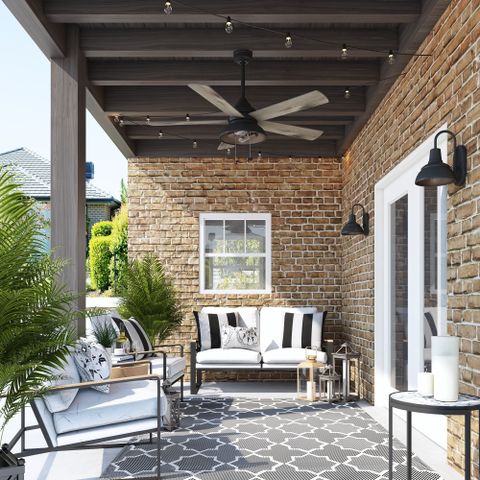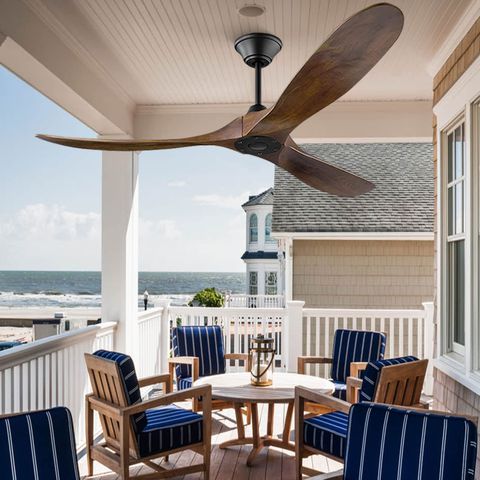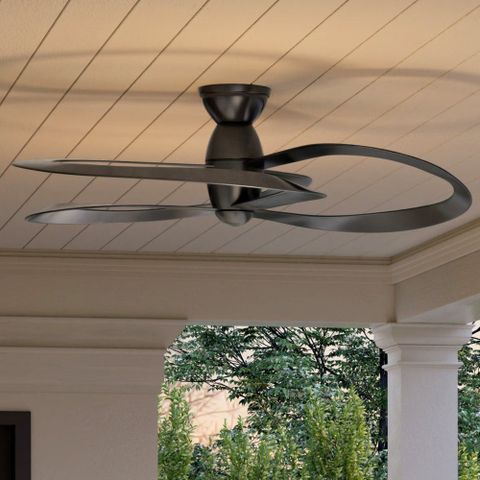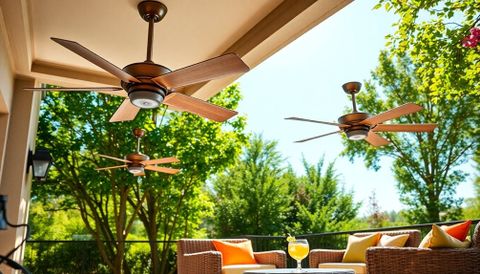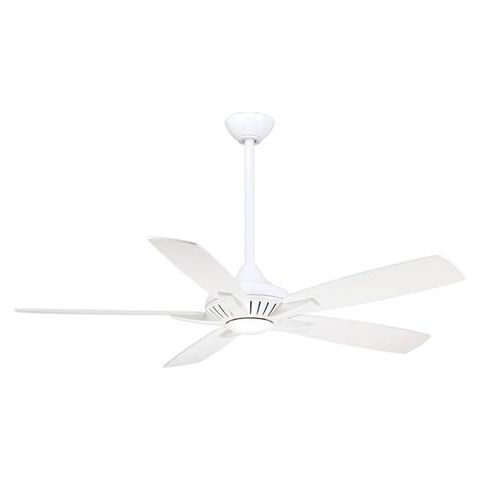Picture this: a bustling outdoor cafe on a sweltering summer afternoon. Patrons are sipping their drinks, chatting with friends, and enjoying the ambiance. What’s the secret? It’s not just the coffee or the pastries. It’s the invisible comfort that comes from perfectly placed fans that keep the heat at bay while maintaining a pleasant breeze. This delicate balance between comfort and convenience is what transforms a simple outdoor seating area into a destination people want to return to again and again.
Outdoor cafes have become the heart of many communities, offering a unique blend of casual dining and social interaction. But let’s be honest – outdoor spaces can be unpredictable. The weather changes faster than you can say ‘latte,’ and what was a perfect sunny day can quickly turn into a stifling heatwave. The key to keeping customers comfortable and coming back lies not in expensive air conditioning systems, but in the thoughtful placement of fans. This isn’t just about spinning blades and cooling air. It’s about understanding how airflow affects human comfort, creating microclimates that feel just right, and ensuring every customer feels like they’ve found their personal sanctuary in the great outdoors.
Understanding Microclimates in Outdoor Spaces
Think of outdoor cafes as stages where temperature, wind, and comfort play out in real time. A well-planned outdoor space creates microclimates – small zones with distinct atmospheric conditions. These aren’t just theoretical concepts; they’re the foundation of a successful outdoor dining experience. When you place fans strategically, you’re essentially creating controlled airflow zones that can make the difference between someone staying for an hour or leaving after ten minutes.
Consider a typical outdoor cafe setup. The seating area might have direct sunlight hitting one side, while the opposite side receives shade from a nearby building. Without proper fan placement, customers on the sunny side could feel uncomfortably hot, while those in the shaded area might feel too cool. The solution lies in creating balanced airflow that maintains consistent comfort levels across all areas.
The science behind this involves understanding how air movement affects our body’s ability to regulate temperature. Moving air helps evaporate moisture from our skin, which naturally cools us down. However, too much direct airflow can create discomfort, especially when people are sitting still. The trick is finding that sweet spot where fans provide relief without causing chill or draftiness.
Fan Types and Their Unique Applications
Not all fans are created equal, and choosing the right type for your outdoor cafe setting can make or break the customer experience. Ceiling fans, while popular for indoor spaces, often aren’t ideal for outdoor environments due to weather exposure and safety concerns. Instead, outdoor-specific fans offer better protection against the elements and can handle varying conditions.
Let’s talk about some common options:
• Pergola fans: These are particularly effective because they can be mounted directly above seating areas. They’re designed to withstand weather conditions and can be positioned to avoid direct contact with people.
• Wall-mounted fans: Perfect for smaller spaces or areas where ceiling installation isn’t possible. They can be angled to direct airflow where needed most.
• Pedestal fans: Versatile and easy to move around, these work well for temporary setups or areas that need flexibility in fan positioning.
• Industrial fans: These are excellent for larger spaces or areas with high ceilings. They can cover more ground and provide powerful airflow when needed.
Each type offers different benefits, and the key is matching the fan type to the specific needs of your space and customer flow. For instance, a small boutique cafe might benefit from wall-mounted fans that can be adjusted throughout the day, while a large patio restaurant might require industrial fans to maintain consistent comfort across a wider area.
Strategic Placement Principles
Placing fans correctly requires more than just installing them wherever they fit. It’s about creating a system that works with the natural flow of your space. Here are some fundamental principles:
Direction Matters: Fans should move air toward customers rather than away from them. If you’re facing the wrong direction, you might be creating uncomfortable drafts instead of helpful breezes. Think of it like directing a river – you want to guide it where you need it, not let it flow freely in any direction.
Height and Angle Considerations: Most effective outdoor fans are positioned between 8 and 12 feet high. This height ensures that airflow reaches customers without being too intense or too weak. Angling fans slightly downward helps direct air toward seating areas while avoiding overhead exposure.
Spacing and Coverage: Don’t assume one fan will do everything. In larger outdoor areas, multiple fans working together create better coverage. The goal is to ensure no customer is left without adequate airflow, while avoiding overlapping zones that might create uncomfortable wind patterns.
Seasonal Adjustments: Many outdoor cafes find that their fan strategy needs to change with the seasons. Summer months might require more aggressive cooling, while spring and fall might need gentler airflow. Having adjustable fans allows you to adapt quickly to changing conditions.
Weather Considerations and Protection
Outdoor spaces face the full force of nature, and fans must be ready for whatever Mother Nature throws their way. Rain, wind, and sun all impact how effectively fans work and how long they last.
Rain protection is essential. Even fans designed for outdoor use can suffer damage from direct water exposure. Installing protective covers or positioning fans under eaves can prevent costly repairs and ensure consistent operation. Some newer fan models come with built-in weather resistance features that make them more suitable for harsh conditions.
Wind patterns also play a role in fan effectiveness. In windy areas, fans might need to be positioned differently to avoid counteracting natural airflow. Sometimes, placing fans strategically can actually enhance natural ventilation rather than fight it.
Sun exposure affects both the fans themselves and how customers perceive airflow. UV rays can degrade fan materials over time, so choosing UV-resistant models or providing shade for fans is crucial. Additionally, direct sunlight can make people feel hotter even when the air temperature is moderate, so fan placement should account for shading effects.
Customer Experience and Behavioral Impact
The true test of good fan placement isn’t just technical efficiency – it’s how customers respond. When airflow is properly managed, you’ll notice immediate improvements in customer behavior and satisfaction. People stay longer, order more items, and return more frequently.
Research shows that comfortable temperatures increase customer spending by up to 15%. This isn’t just about staying cool – it’s about creating an environment where people want to linger. When customers feel physically comfortable, they’re more likely to engage socially, spend more money, and recommend the space to others.
The psychological aspect of airflow shouldn’t be underestimated. A gentle breeze can signal to customers that the establishment cares about their comfort. It’s a subtle but powerful indicator that this is a place where they belong. Customers often don’t articulate why they prefer one outdoor space over another, but they definitely notice when airflow is poorly managed.
Observation reveals that good fan placement reduces complaints and increases positive interactions. Staff members report fewer requests for additional seating or shade, and customers seem more relaxed and satisfied with their overall experience.
Cost-Effective Solutions and Maintenance
Implementing effective fan strategies doesn’t require breaking the bank. Many outdoor cafes successfully manage their airflow with budget-conscious approaches that deliver excellent results.
Energy efficiency plays a big role in cost management. Modern fans often feature variable speed controls and programmable timers that allow you to adjust power consumption based on occupancy and weather conditions. LED lighting integrated into fan designs can also reduce overall energy usage while providing ambient lighting.
Maintenance schedules are crucial for long-term success. Regular cleaning prevents dust buildup that can reduce efficiency and create uneven airflow. Checking motor components and lubricating moving parts according to manufacturer recommendations extends fan life significantly.
Budget-friendly alternatives include using existing structures to support fan installation, such as pergolas or awnings. These not only provide mounting points but also contribute to overall shade and comfort. Some cafes have found success with DIY solutions for smaller spaces, though professional installation is recommended for larger or more complex setups.
The investment in proper fan placement pays dividends through increased customer retention and higher revenue per visit. A few hundred dollars spent on strategic fan placement can result in thousands of dollars in additional income over the course of a season.
Creating a truly comfortable outdoor cafe experience isn’t about having the most powerful fans or the fanciest equipment. It’s about understanding how airflow affects human comfort and using that knowledge to design spaces where customers want to spend time. The right fan placement can transform a simple outdoor seating area into a thriving community gathering place.
The journey toward perfect outdoor comfort starts with recognizing that fans are tools for human experience, not just mechanical devices. Every angle, every height, every direction choice represents a decision about how you want customers to feel in your space. When you get it right, the results speak for themselves – customers linger longer, return more often, and spread word about the delightful comfort you’ve created.
Whether you’re opening a new outdoor cafe or looking to improve an existing space, remember that strategic fan placement is one of the most impactful investments you can make in customer satisfaction. It’s not about making people feel cold – it’s about making them feel just right. And in the world of outdoor dining, that comfort level can be the difference between a good experience and a memorable one.

